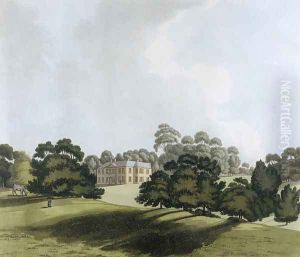John George Wood Paintings
John George Wood, known for his work as a writer and popularizer of natural history, was not primarily an artist but contributed significantly to the literature of natural history during the Victorian era. Born on July 21, 1827, in London, England, Wood was educated at Ashbourne and Merton College, Oxford. He took holy orders and became an ordained priest in the Church of England. However, his deep interest in zoology and the natural world led him to pursue a career that would bring the wonders of nature to the broader public.
Wood's penchant for natural history was evident in his numerous publications, which included books aimed at children and general readers. His works often contained detailed illustrations, which he sometimes drew himself, contributing to the visual aspect of his educational mission. One of his most famous works is 'Common Objects of the Country', which encouraged people to explore and appreciate the nature around them.
His writing style was known for being engaging and accessible, which made his books popular among a wide audience. Wood's efforts were instrumental in fostering a greater appreciation of nature among the Victorian public. He traveled extensively, giving lectures on natural history, which further augmented his reputation as a knowledgeable and passionate educator.
John George Wood died on March 3, 1889. Although not renowned as a fine artist, his legacy in the realm of natural history education remains significant. His work helped to popularize the study of nature and inspired many to take an interest in the natural sciences. His books, filled with illustrations and vivid descriptions, continue to be a testament to his dedication to sharing the beauty of the natural world.
